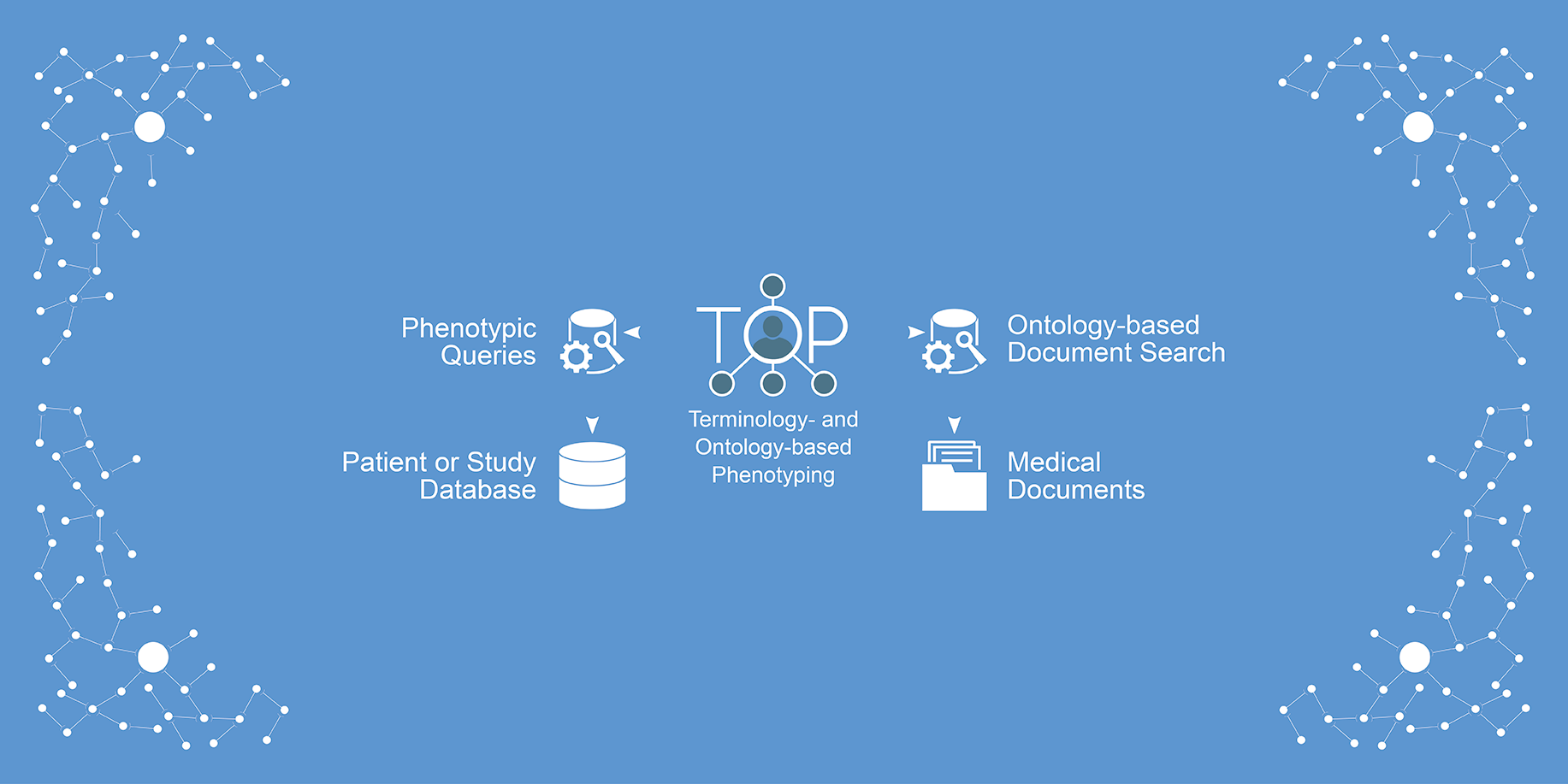
TOP Junior Research Group: First prototype for modelling phenotype algorithms completed
The SMITH Junior Research Group “Terminology and Ontology-based Phenotyping” (TOP) aims to implement an easily accessible ontology-based software platform for modelling and executing phenotype algorithms. The so-called TOP framework is implemented as a modular web application that combines various software tools and services for algorithmic phenotyping. With algorithmic phenotyping, characteristics (i.e. phenotypes) of patients can be mapped and automatically recognised. Now the first prototype of the TOP framework has been successfully completed.
The SMITH Junior Research Group at the Leipzig University, led by Dr Alexandr Uciteli, has already been working on the TOP framework since 2021. The TOP framework enables professionals without special IT experience, e.g. medical staff or biometricians, to record phenotypic knowledge in a structured and simple way. The structure of the data, query languages or other technical aspects are not relevant.
Established terminologies make data comparable
Phenotypes of different levels of complexity can be modelled with the framework. By specifying the title, data type, unit of measurement and codes from medical terminologies, individual phenotypes are specified. Established terminologies such as SNOMED CT, LOINC, ICD or OPS are used to describe them semantically and to enable data comparability. These terminologies can also be used to establish links to the data sources and to generate as well as execute the necessary queries.
Composite phenotypes are specified by an evaluable expression representing either a phenotype, a constant or a function with any number of arguments. This makes nesting possible. Not only mathematical, but also logical and ontological functions are supported.
First phenotype models have been developed with the prototype of the TOP framework
The first prototype of the TOP framework includes the following functions:
- Development of standardised phenotype models
- Clear separation between model development and application
- Connection to different data sources as well as generation and execution of queries
- Version control, reuse, export of phenotype algorithms and their components
Phenotype models can be used to identify certain diseases or risk factors in patients, e.g. diabetes, delirium or renal insufficiency. In addition, phenotyping helps to find patients who fulfil certain criteria for study participation. The framework is currently being evaluated on the basis of the algorithms from the POLAR and INTERPOLAR projects. Among other things, the aim is to identify and avoid drug-related health risks, such as adverse drug interactions.
Further information on the work of the junior research group can be found here.

